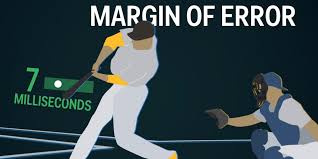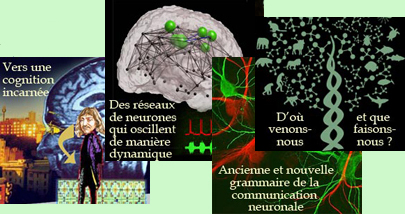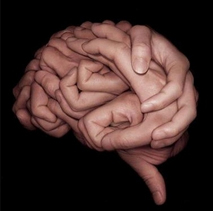Wednesday, 7 February 2018
Are crows just as good at planning as the great apes?

Over the years, many studies have been published on the intelligence of crows, ravens, jays and other corvids (members of the crow family). But according to several specialists on the subject, a study entitled “Ravens parallel great apes in flexible planning for tool-use and bartering,” published in July 2017 in the journal Science, reveals that birds in this family have a heretofore unexpected ability to plan a future behaviour after learning something under experimental conditions. The conditions in this study were such that the behaviour was unlikely to have arisen from a more or less innate adaptation to the birds’ natural environment. The ravens learned to use a rock to get a piece of food out of a box built by humans—certainly not a natural feature of the ecological niche in which their species evolved. Nevertheless, once they had learned this behaviour, they were able to select the rock out of a group of objects, then wait for as many as 17 minutes for the researchers to show them the box again, and then use the rock to get the food out of the box. (more…)
From Thought to Language | No comments
Tuesday, 23 January 2018
The Mere Presence of Your Smartphone Reduces Your Cognitive Capacity

An article entitled “Brain Drain: The Mere Presence of One’s Own Smartphone Reduces Available Cognitive Capacity”, published by Adrian Ward and his colleagues in April 2017, suggests that smartphone owners’ cognitive capacities may be reduced by the mere fact of knowing that their devices are close at hand.
Ward’s study included nearly 800 subjects, all of whom were smartphone users. They were asked to perform a series of tests that required a high degree of concentration in order to achieve good results. In the first experiment, the subjects were divided into three groups. The subjects in the first group placed their phones on the table in front of them, face down; those in the second group kept their phones in their pockets or handbags; and those in the third group left their phones in another room. The subjects who had left their phones in another room achieved significantly better test results than those who had their phones in front of them on the table, and slightly better results than those who had their phones in their pockets or bags. (more…)
From Thought to Language | No comments
Tuesday, 9 January 2018
The Baseball Batter’s Predictive Brain

For some years now, cognitive scientists have increasingly come to regard the human brain as a machine for making predictions. In other words, these scientists think that our brains spend most of their time trying to figure out what is going to happen next so that they can take action accordingly. The great adaptive value of such a process is immediately obvious.
The theoretical framework underlying this view of things is extensive and fairly new, although it has roots in 18th-century philosophy. Some authors even describe it as a paradigm shift, the same term that has been applied in turn to the cognitivist, connectionist and embodied dynamic approaches over the past half-century. (more…)
Body Movement and the Brain | No comments
Tuesday, 19 December 2017
Blog posts in French in December 2017 – Part II (English posts return in January 2018)
 As I wrote two weeks ago, Al Daigen, who has translated all the of content for The Brain from Top to Bottom from French into English and who continues to translate selected posts from this website’s blog, will be taking a well earned vacation in December 2017. Since my English is not up to his high standards, I’m not going to try to replace him. But to make sure you don’t have to go too long without hearing from me, I want to let those of you who can read French know about 8 posts based on the lectures that I gave this fall at the “Université du troisième âge (UTA)” and that I think you will enjoy. (more…)
As I wrote two weeks ago, Al Daigen, who has translated all the of content for The Brain from Top to Bottom from French into English and who continues to translate selected posts from this website’s blog, will be taking a well earned vacation in December 2017. Since my English is not up to his high standards, I’m not going to try to replace him. But to make sure you don’t have to go too long without hearing from me, I want to let those of you who can read French know about 8 posts based on the lectures that I gave this fall at the “Université du troisième âge (UTA)” and that I think you will enjoy. (more…)
From the Simple to the Complex | No comments
Wednesday, 6 December 2017
Blog posts in French in December 2017 (English posts return in January 2018)
 Al Daigen, who has translated all the of content for The Brain from Top to Bottom from French into English and who continues to translate selected posts from this website’s blog, will be taking a well earned vacation in December 2017. Since my English is not up to his high standards, I’m not going to try to replace him. But to make sure you don’t have to go too long without hearing from me, I want to let those of you who can read French know about 14 posts based on 14 lectures on embodied cognition that I gave last fall at the Université du Québec à Montréal and that I think you will enjoy. Unfortunately, the rest of you will either have to wait until Al’s translations of recent posts begin appearing here again on January 8, 2018, or try your luck with Google Translate, which has improved a fair bit in recent years, thanks to “deep learning” technology.
Al Daigen, who has translated all the of content for The Brain from Top to Bottom from French into English and who continues to translate selected posts from this website’s blog, will be taking a well earned vacation in December 2017. Since my English is not up to his high standards, I’m not going to try to replace him. But to make sure you don’t have to go too long without hearing from me, I want to let those of you who can read French know about 14 posts based on 14 lectures on embodied cognition that I gave last fall at the Université du Québec à Montréal and that I think you will enjoy. Unfortunately, the rest of you will either have to wait until Al’s translations of recent posts begin appearing here again on January 8, 2018, or try your luck with Google Translate, which has improved a fair bit in recent years, thanks to “deep learning” technology.
Body Movement and the Brain | No comments







